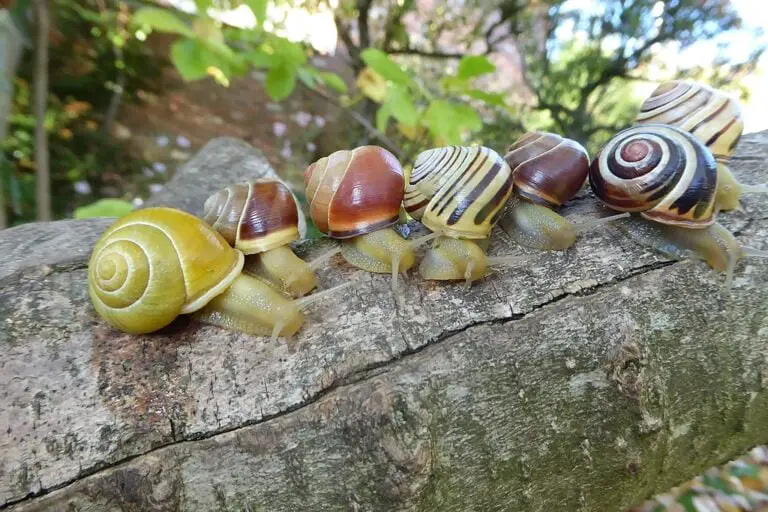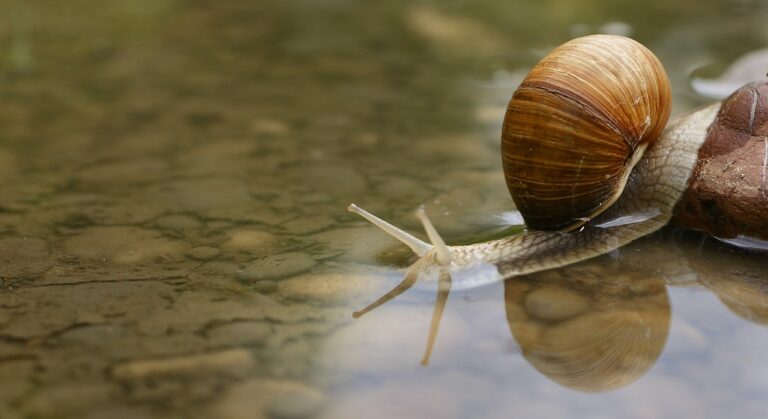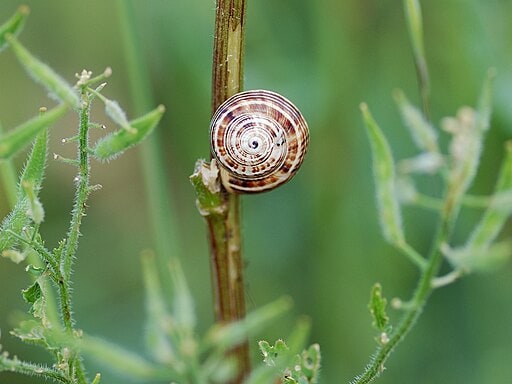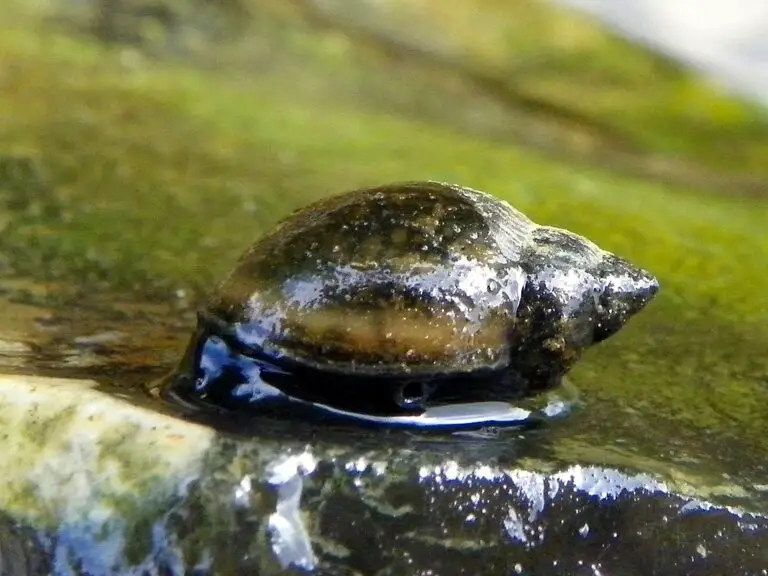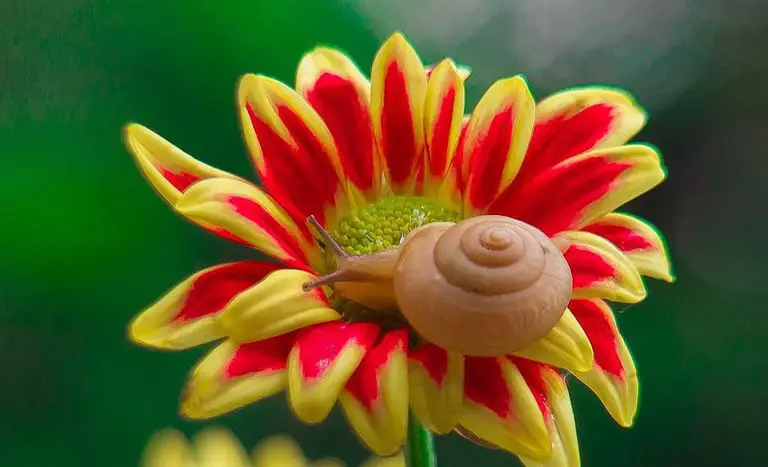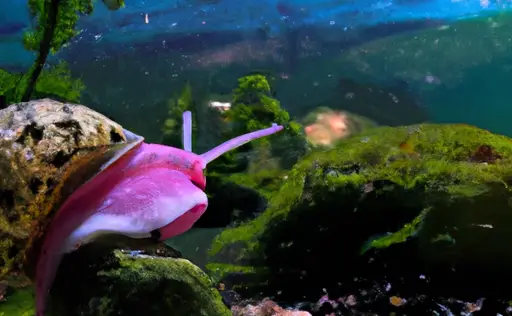Crawling to a Different Beat: How Do Snails Move?
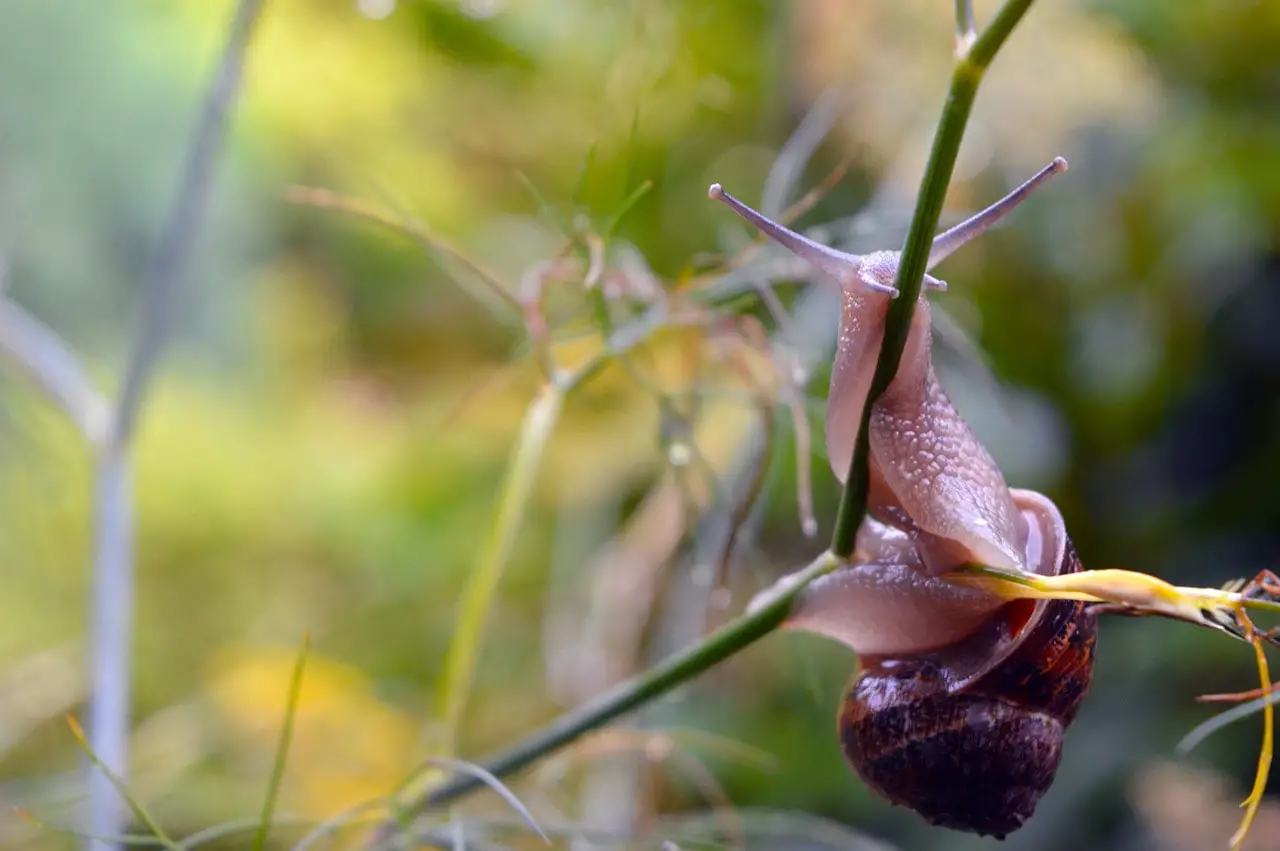
How do snails move? If you’ve ever spent time watching these small, often overlooked creatures, you might have asked yourself this question. Snails may not be fast, they may not be flashy, but their slow, steady progress is a marvel of nature’s engineering. Despite their apparent simplicity, snails have developed a unique and efficient way to get around, leaving a distinctive trail of slime in their wake. In this article, we’ll unpack the mystery of snail movement, taking a closer look at their ‘foot’, their surprising ability to stick to surfaces, and the science behind their leisurely pace. No fancy jargon, just the fascinating world of snails and their locomotion. Let’s get moving!
Snail Anatomy and Movement
Snails are extraordinary creatures due to their unique mode of movement. To better understand how they move, it’s essential to explore their anatomy. The anatomy of a snail is intriguing and plays a significant role in their movement.
| Anatomy | Description |
|---|---|
| Foot | The foot is the muscle that contracts and extends to enable snails to move. It’s broad and flat, acting as a suction pad for them to move over distinctive surfaces. |
| Shell | A snail’s shell provides structural support, protecting the internal organs from damage. The shell is an integral part of the snails’ anatomy, and it’s responsible for determining their shape and size. |
| Mantle | The mantle is a skin-like tissue found on the dorsal surface of the snail’s body. It secretes mucus, which helps lubricate their movement. |
The foot is the most crucial part of a snail’s anatomy when it comes to their movement. The muscles that control the foot are longitudinal and circular and enable snails to control their movement. The foot’s unique structure and ability to secrete mucus allow snails to move slowly and steadily, adapting to various surfaces.
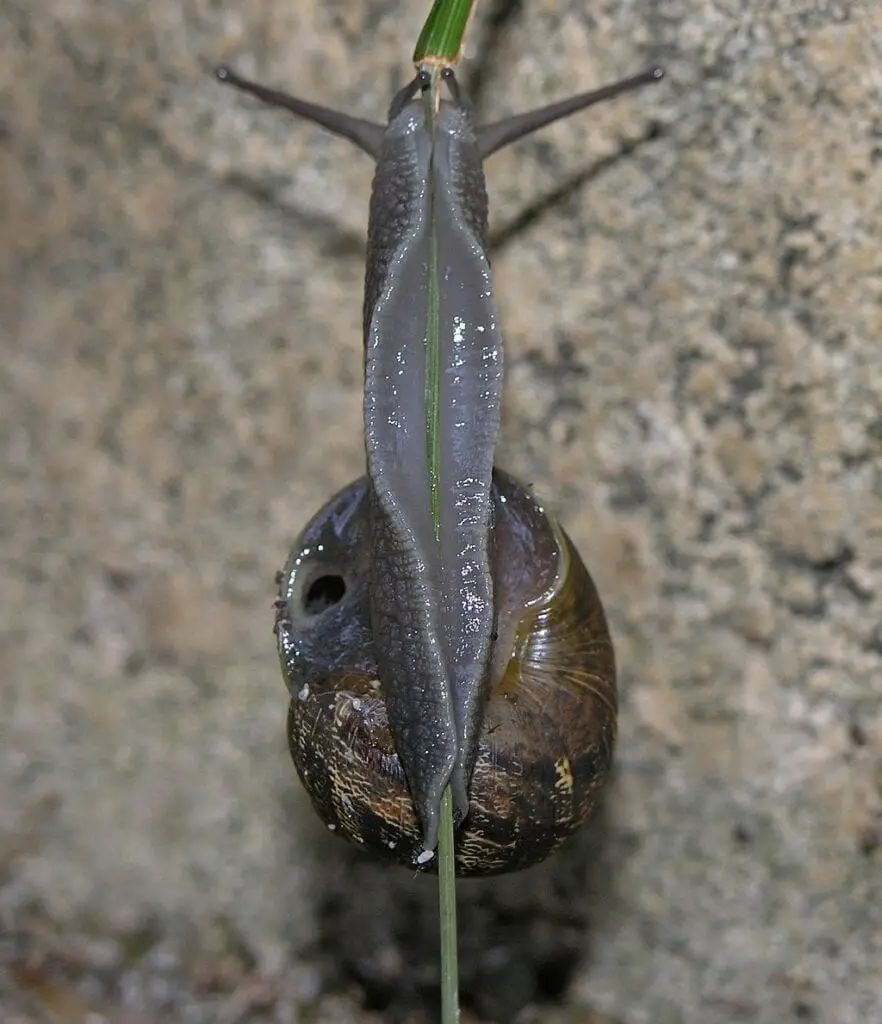
Snail Locomotion: The Role of Muscular Contractions
When snails move, they alternate between muscle contractions and extensions. The muscles that control the foot’s movement run through the sides of the foot, along its length. The muscles’ contraction sets up a wave, which moves from the snail’s tail to their head, allowing them to propel forward.
The foot’s underside has a series of adhesion muscles, which help it to grip surfaces. These muscles cause the foot to spread out and contract when activated, increasing the suction effect. As the snail moves, it alternates between pushing and sticking the foot down, creating its distinctive motion pattern.
The mucus secreted from the mantle creates a layer between the foot and the surface. This layer allows the snail to glide over various surfaces, reducing their friction and enabling them to move with ease. The mucus trail that snails leave behind is a result of this secretion, allowing them to mark their territory and find their way back.
Understanding the anatomy of snails is crucial in understanding their mechanism of movement. In the next section, we dive deeper into the functionality of their foot and how it helps them move.
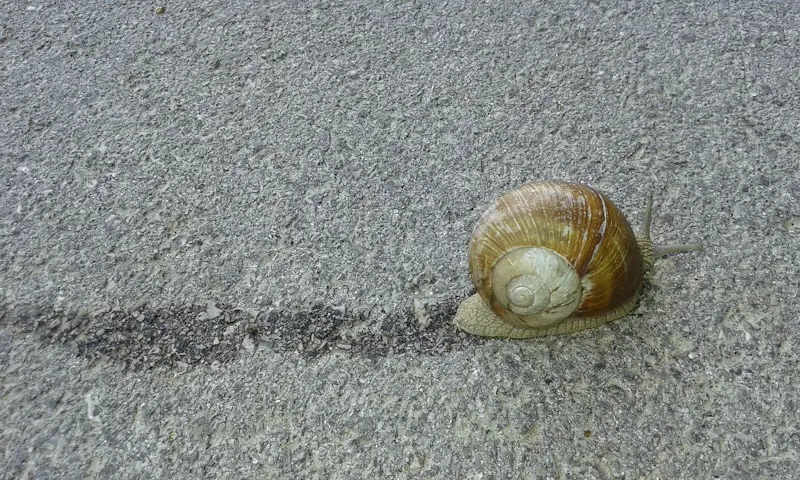
The Function of a Snail’s Foot
The foot of a snail is a crucial anatomical feature that plays a significant role in their movement. It is a large, muscular organ located on the ventral side of the snail’s body, which is responsible for locomotion.
The foot is divided into two regions: the central disk-shaped part and the outer edge, which is called the sole. The sole is covered in small muscles that contract and expand in a wave-like motion, propelling the snail forward. The muscles work together to create a rippling effect, which helps the snail glide smoothly over surfaces.
In addition to muscular contractions, the foot also secretes mucus, which reduces friction between the snail and the surface they’re moving on. The mucus also helps the snail grip onto surfaces, preventing them from slipping backwards.
| Function of the snail’s foot | How it helps the snail move |
|---|---|
| Propulsion | The muscles contract and expand in a rippling motion, pushing the snail forward. |
| Adhesion | The mucus secreted by the foot helps the snail grip onto surfaces and prevent it from slipping backward. |
| Reducing friction | The mucus also reduces friction between the snail and the surface, allowing it to glide smoothly. |
Interestingly, different species of snails have evolved unique foot structures and mechanisms to suit their environments and lifestyles. For example, some snails have elongated and flattened feet that help them burrow into the soil or sand, while others have suction cups on their feet that allow them to climb vertical surfaces.
Conclusion:
Overall, the foot of a snail is a complex and remarkable organ that enables snails to move in their unique and unusual way. Through muscular contractions and mucus secretion, snails can glide over surfaces with ease and adapt to a variety of environments.
The Mechanism of Snail Movement
Have you ever wondered how a snail manages to move so gracefully and gracefully? The secret lies in the way their body works. Snails move by a combination of muscular contractions and the secretion of mucus on their foot, which helps them to glide along surfaces.
Their foot, which is located on the underside of their body, is the primary organ responsible for their movement. The foot is made up of a series of muscles that work together to create waves of movement that propel the snail forward. As the muscles contract, they create a wave-like motion that moves the snail’s foot forward, allowing it to glide along the ground.
In addition to the movement of their foot, snails also secrete mucus, which helps to reduce friction between their body and the surface they are moving on. This allows them to move more easily and conserve their energy. As the snail moves, it leaves behind a trail of mucus, which not only helps it to move but also serves as a sense of direction. This is because the snail can follow its own trail, allowing it to navigate its environment.
| Fact: | Some species of snails can move up to 55 yards in an hour, while others move more slowly. |
|---|
When it comes to climbing walls or other vertical surfaces, snails use a combination of muscle contractions and adhesive secretions to stick to the surface. Their foot releases a sticky substance that allows them to adhere to the surface, while their muscles create the necessary force to hold them in place.
Overall, snails may seem slow and sluggish, but their unique mode of movement is a marvel of nature. From their muscular contractions to their mucus secretions, everything works together to allow them to move gracefully and efficiently.
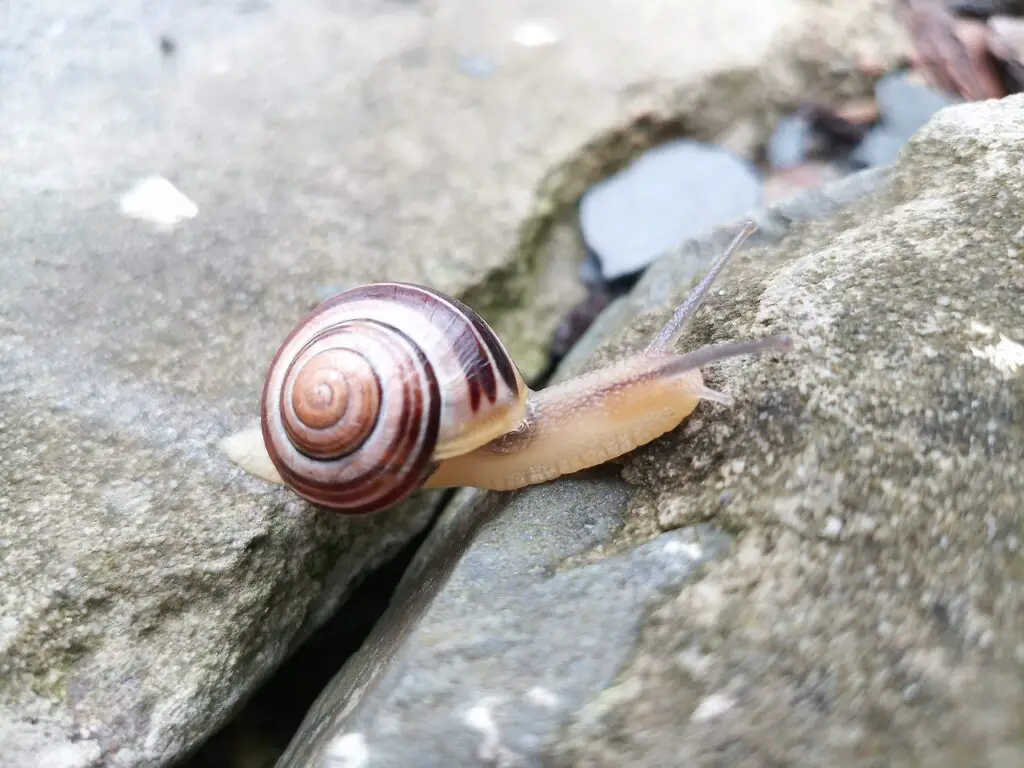
Snail Locomotion on Land
Snails are notorious for their slow speed on land, with some species only able to cover a few inches per minute. But what makes them move so slowly, and how do they manage to get around at all?
Firstly, it’s important to note that snails have a muscular foot that covers the entire underside of their body. This foot is responsible for both movement and adhesion, allowing the snail to grip onto surfaces as it travels.
The speed at which a snail moves is influenced by various factors, such as its size, age, health, and surrounding environment. Most snails move at a pace of about 0.03 miles per hour, although some species can reach speeds of up to 0.7 miles per hour.
One adaptation that helps snails move is the secretion of mucus from their foot. This mucus acts as a lubricant, reducing friction between the snail’s body and the ground, allowing it to glide more easily. It also helps to prevent damage to the snail’s delicate body as it moves over rough surfaces.
Another factor that influences snail movement is the incline of the surface they are traveling on. Snails find it easier to climb surfaces that are not too steep and that provide enough traction for their foot to grip onto. On very steep surfaces, snails may struggle to grip and may even slide backward.
Factors Affecting Snail Movement on Land
Here are some of the key factors that can affect snail movement on land:
- Surface incline and traction
- Humidity levels and temperature
- Presence of obstacles or predators
- Health, age, and species of snail
While snails may not be the fastest creatures on land, they are remarkably adapted to their environment and possess certain tools, such as their mucus-producing foot, that allow them to move with relative ease.
The Slime Trail Mystery
Have you ever wondered why snails leave behind a trail of slime wherever they go? This seemingly icky substance actually plays a vital role in their movement.
The slime trail is created by mucus secreted from the snail’s foot, which helps reduce friction and prevent damage as the snail slides along a surface. This slimy substance also enables snails to climb over obstacles and navigate uneven terrain.
Interestingly, the mucus in the slime trail also contains pheromones, chemical signals that snails use to communicate with each other. These pheromones help snails find potential mates and signal danger or a food source.
Sticky Situations: Snails on Walls
While most snails move along the ground, certain species have the impressive ability to climb vertical surfaces such as walls and trees. This behavior, known as “crawling” or “climbing,” is made possible by the snail’s unique adhesive properties and specialized muscular movements.
One key factor in a snail’s ability to stick to surfaces is the secretion of mucus from glands in their foot. This mucus acts as an adhesive, allowing the snail to cling to surfaces without slipping or falling. Additionally, the muscles in a climbing snail’s foot are highly specialized, allowing for precise movements and the ability to grip and release surfaces as needed.
| Factors influencing snail climbing abilities: | Examples of climbing snail species: |
|---|---|
|
|
Interestingly, not all snail species are capable of climbing surfaces, as their anatomy and mucus properties may differ. While some snails can climb vertical surfaces with ease, others may struggle or be unable to do so at all.
Snail Movement in Water
Snails are known for their slow movement on land, but they can have quite different locomotion patterns in water. Some snails are adapted for swimming or floating, while others crawl along the bottom.
Aquatic snails use their foot in a manner similar to their terrestrial counterparts, by contracting and relaxing their muscles to create movement. However, they also rely on adaptations such as buoyancy and hydrodynamics to move in water.
One of the ways snails move through water is by creating a current with their foot and a mucus trail, which helps them glide along. Some snails have a more streamlined shell and foot shape, allowing them to swim more efficiently. Others can float on the water’s surface using a layer of air trapped in their shell.
Snails that crawl along the bottom of aquatic environments may also have specialized adaptations. For example, certain species have a shell that is flattened and elongated, allowing them to move along the surface of rocks or other hard substrates.
Overall, snails have adapted to a variety of aquatic environments and have developed unique mechanisms for locomotion in such habitats.
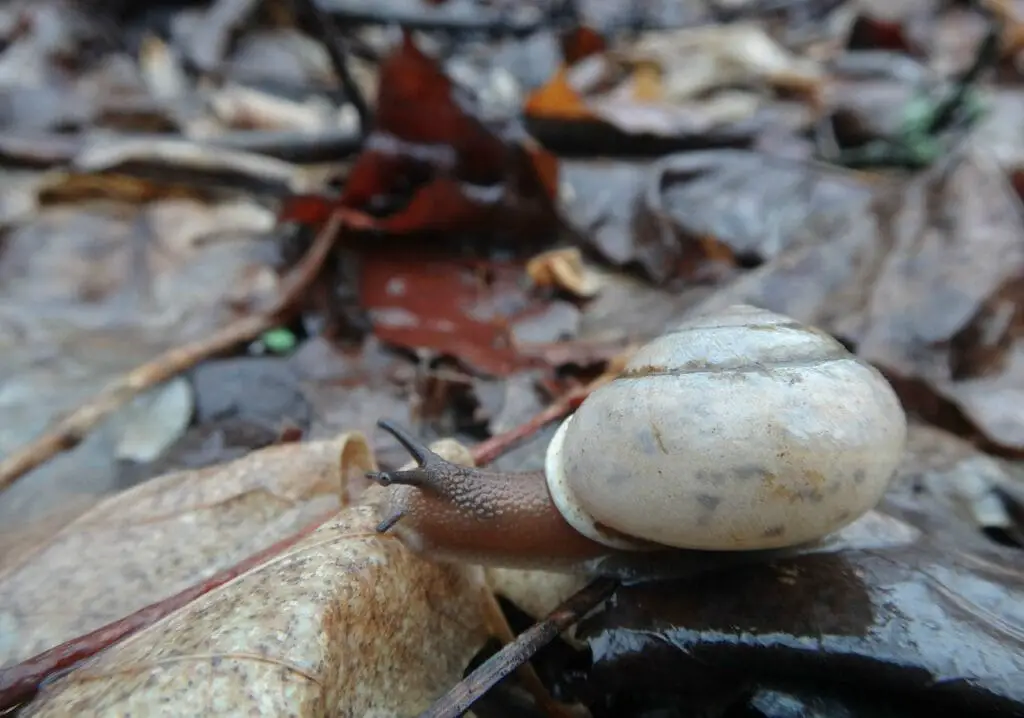
Additional Subtopics
Snail Locomotion in Different Species
While most snails move in a similar manner, there are some species that have adapted unique movement patterns. For example, the giant African land snail can move up to 6.5 feet per hour, while some sea snails are able to swim through the water by flapping their foot like a fin.
Factors Affecting Snail Movement
There are several factors that can impact the way snails move. For example, temperature and humidity can affect the amount of mucus a snail produces, which in turn affects their ability to move smoothly. The presence of predators can also cause snails to move more quickly or erratically.
Snail Movement in Different Environments
The way snails move can vary depending on their environment. In addition to adaptations for movement on land and in water, some snails are able to move through narrow spaces by contracting their bodies into a small size. Others are able to climb trees and other vertical surfaces using a combination of their mucus and muscular contractions.
FAQ – Frequently Asked Questions
In this section, we will answer some frequently asked questions about snail movement and locomotion.
How do snails move?
Snails move through the rhythmic contraction and relaxation of their foot muscles, which propels them forward. They also produce mucus to reduce friction and aid in movement.
What is the function of a snail’s foot?
The foot is a muscular organ that allows snails to move. It also serves as a sensory organ, enabling them to detect light, touch, and chemicals in their environment.
Do snails move differently on land compared to water?
Yes, snail movement differs in aquatic environments. Some species develop adaptations such as fins for swimming, while others float on the surface tension of the water.
Why are snails so slow?
Snails have a slow metabolism and require little energy because they are cold-blooded. Their slow movement also helps protect them from predators and conserve moisture.
How do snails stick to walls?
Certain snail species have a specialized secretion on their foot called pedal mucus, which allows them to adhere to vertical surfaces. The mucus forms a thin film, creating suction and enabling them to climb.
What is the purpose of the slime trail left by snails?
The slime trail left by snails helps them to navigate, communicate with other snails, and locate food. It also provides a layer of protection against predators and helps them retain moisture.
The Symphony of Snail Movement: Final Thoughts
As we’ve learned, the journey of a snail may be slow, but it’s far from simple. Through the mesmerizing dance of muscular contractions, a veritable river of mucus, and a set of specialized anatomical features, snails move in a way that is as unique as it is fascinating.
Despite their diminutive size and seemingly lethargic pace, snails are well-equipped for their journeys, able to traverse a variety of terrains and even defy gravity to scale vertical surfaces. They are a testament to the marvels of evolution, embodying the principle that in nature, even the smallest creatures can exhibit the most complex behaviors.
From a mere glance, the world of the snail may seem simple, even mundane, but as we’ve delved deeper into the intricate mechanisms behind their locomotion, it’s evident that there’s far more to these tiny wanderers than meets the eye. The snail, unhurried, patient, and equipped with its own bespoke tools of locomotion, moves to its own distinct rhythm in the symphony of life, a rhythm that is every bit as fascinating as it is unique.
The next time you see a snail on a leisurely crawl, take a moment to appreciate the complexities at play. Every small slide forward is a masterpiece of biological engineering, an everyday marvel happening right beneath our noses. The world of the snail may be slow, but it’s far from boring. Happy snail-watching!

